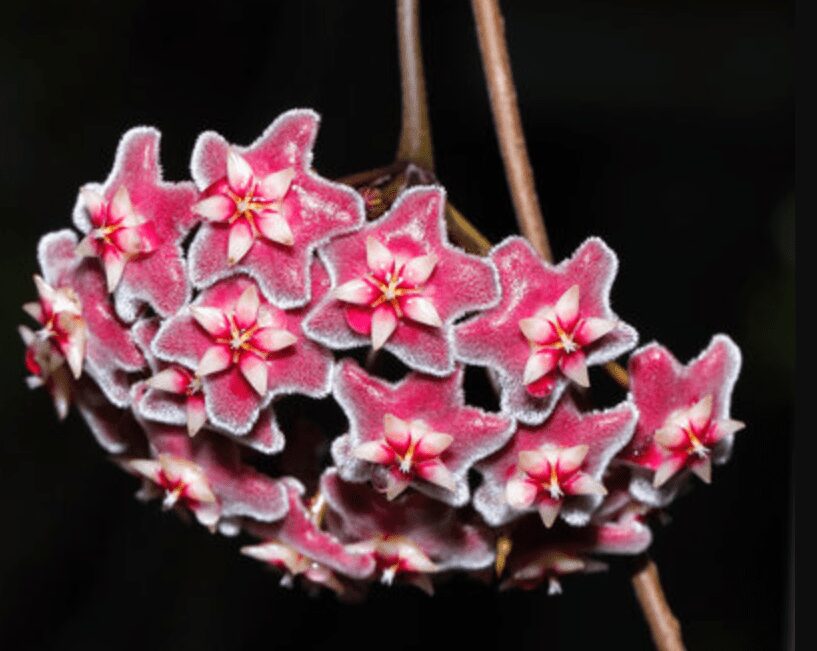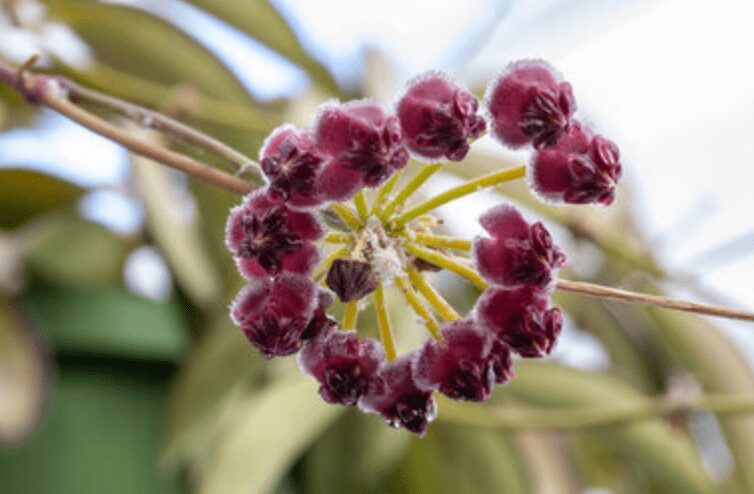
Hoya Wayetii, also known as Wax Plant, is a popular houseplant loved for its ornamental appearance and ease of care. This short guide will give you all the information you need to know to keep your Hoya Wayetii healthy and thriving.
Hoya Wayetii is a tropical succulent that is native to Southeast Asia. It belongs to the Hoya family, which comprises over 200 species of flowering plants. Hoya Wayetii has small, light green leaves covered in a waxy coating, hence its common name Wax Plant.
Care Tips for Hoya Wayetii
Light
Hoya Wayetii thrives in bright, indirect light. Direct sunlight can burn the leaves, while low light conditions cause stunted growth and leaf drop. Place your plant near a window that receives filtered sunlight, or use a sheer curtain to diffuse the light.
Watering
Water your Hoya Wayetii when the top inch of the soil feels dry. Overwatering can cause root rot, while underwatering can cause the plant to wilt and die. Use a well-draining soil mix and a pot with drainage holes to prevent waterlogging.
Humidity
Hoya Wayetii prefers moderate to high humidity levels. You can increase humidity by misting the leaves or placing a humidifier near the plant. Alternatively, you can place a water tray near the plant or group it with other plants to create a microclimate.
Soil
Hoya Wayetii prefers well-draining soil that allows water to flow through easily. A good soil mix for this plant would be 50% peat moss, 25% perlite, and 25% vermiculite. Alternatively, you can use a commercial potting mix for succulents or cacti.
Potting
When repotting your Hoya Wayetii, choose a pot slightly larger than the current one. This will give the plant enough room to grow without overwhelming it with too much soil. Ensure the pot has drainage holes to prevent waterlogging, and add a layer of gravel or perlite at the bottom to improve drainage.
Pruning
Hoya Wayetii is a relatively slow-growing plant, but it can benefit from occasional pruning to keep it in shape and encourage bushier growth. You can trim the stems by cutting just above a node or removing any dead or yellowing leaves.
Temperature
Hoya Wayetii prefers warm temperatures between 60-85°F (15-29°C). Avoid exposing the plant to temperatures below 50°F (10°C) or above 90°F (32°C), as this can cause damage to the leaves and affect its overall health.
Propagation
Hoya Wayetii is easy to propagate from stem cuttings. Cut a stem with a few leaves and a node and place it in a well-draining soil mix. Keep the soil moist and place the cutting in bright, indirect light. Roots and new growth should appear in a few weeks.
Propagation by Division
Hoya Wayetii can also be propagated by division, separating a mature plant into smaller sections with their root system. This method is best done during the spring or summer when the plant is actively growing.
Carefully remove the plant from its pot, gently separate the roots, and then replant each section in a new pot.
Fertilizing
Feed your Hoya Wayetii monthly during the growing season with a balanced, water-soluble fertilizer. Do not fertilize during the winter months when the plant is dormant.
Common Problems
Hoya Wayetii is relatively pest and disease-resistant but can suffer from overwatering, underwatering, and low light conditions. Watch out for yellowing leaves, which can indicate root rot, or drooping leaves, which can indicate dehydration.

FAQs
How often should I water my Hoya Wayetii?
It’s best to water your Hoya Wayetii when the top inch of soil feels dry. Overwatering can cause root rot, while underwatering can cause the plant to wilt and die.
How much light does my Hoya Wayetii need?
Hoya Wayetii thrives in bright, indirect light. Direct sunlight can burn the leaves, while low light conditions cause stunted growth and leaf drop.
How do I increase humidity for my Hoya Wayetii?
Hoya Wayetii prefers moderate to high humidity levels. You can increase humidity by misting the leaves or placing a humidifier near the plant. Alternatively, you can place a water tray near the plant or group it with other plants to create a microclimate.
How do I fertilize my Hoya Wayetii?
Feed your Hoya Wayetii monthly during the growing season with a balanced, water-soluble fertilizer. Do not fertilize during the winter months when the plant is dormant.
How do I propagate my Hoya Wayetii?
Hoya Wayetii is easy to propagate from stem cuttings. Cut a stem with a few leaves and a node and place it in a well-draining soil mix. Keep the soil moist and place the cutting in bright, indirect light. Roots and new growth should appear in a few weeks.
How do I repot my Hoya Wayetii?
When repotting your Hoya Wayetii, choose a pot slightly larger than the current one. Ensure the pot has drainage holes to prevent waterlogging, and add a layer of gravel or perlite at the bottom to improve drainage.
How do I prune my Hoya Wayetii?
Hoya Wayetii can benefit from occasional pruning to keep it in shape and encourage bushier growth. You can trim the stems by cutting just above a node or removing any dead or yellowing leaves.
What should I do if my Hoya Wayetii has yellow leaves?
Yellowing leaves can indicate root rot, which can be caused by overwatering. Make sure your Hoya Wayetii is not sitting in water and adjust your watering schedule accordingly.
Why are the leaves on my Hoya Wayetii turning brown?
Brown leaves can indicate that your Hoya Wayetii is getting too much direct sunlight. Move the plant to a spot with filtered sunlight or use a sheer curtain to diffuse the light.
Can I keep my Hoya Wayetii outdoors?
Hoya Wayetii can be kept outdoors in warm climates but should be protected from direct sunlight and frost. Keep the plant in a shaded area and bring it indoors if temperatures drop below 50°F (10°C).
Conclusion
In conclusion, Hoya Wayetii is an easy-to-care-for houseplant that can bring tropical beauty to your home. By following our care guide, you can ensure that your plant thrives and remains healthy for years.
We hope that these frequently asked questions provide the answers you need to keep your Hoya Wayetii healthy and thriving. If you have any other questions or concerns, please do not hesitate to contact us.


























